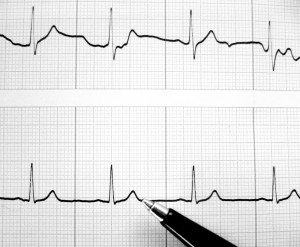It's practically gospel in American health care--the more expensive and the more invasive a treatment is, the more people seem to believe it is the best option. But is it? A new study looks at America's number 1 killer -- heart disease -- and finds that a regimen of fairly inexpensive pills works just as well as an expensive surgical procedure to implant a stent. Oh, and drug treatment has fewer risks in this case, too.
The study is published in this week's Archives of Internal Medicine and it looks at stable coronary artery disease. In stable heart disease, patients experience angina --chest pain -- at times of "high demand" such as during exercise or stress.
This study is a new review of a group of randomized trials which had compared medication treatment with the surgical option, called percutaneous coronary intervention, or PCI. In PCI, a surgeon threads a narrow tube through an artery to a point where there is blockage in the heart and inserts a stent--a mesh tube--against the walls of the artery to hold it open.
While it certainly sounds like a good idea, researchers found no benefit over drug therapy. As the authors write:
The significant finding of this analysis is that compared with a strategy of initial medical therapy alone, coronary stent implantation in combination with medical therapy for stable CAD [coronary artery disease] is not associated with a significant reduction in mortality, nonfatal MI ... or angina.
"MI" is shorthand for myocardial infarction--a heart attack. So, in other words, if you have stable heart disease, you will do just as well with the less expensive pills and you will not bear the risks of surgery. But PCI is a popular procedure. The researchers report that more than 400,000 Americans a year have PCI with a stent implanted every year.
